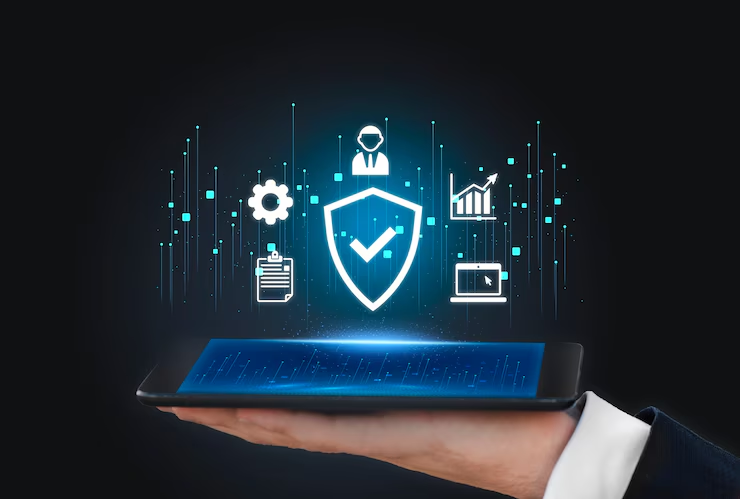What is a Ransomware Threat
Dubai is now known as a growing center for innovation and technology. But as technology advances, there is always a risk of cyberattacks, especially those using ransomware. Malicious malware known as ransomware encrypts files and demands money in exchange for releasing them, posing a serious threat to both individuals and businesses.
Channel Next provides ransomware protection in Dubai. In this blog, we examine the complexities of ransomware attacks and practical defenses against them in the ever-changing cybersecurity environment in Dubai.
Why need a ransomware attack protection in Dubai
Due to its quick digital transition, Dubai is now a top target for cybercriminals looking to take advantage of holes in networks and systems. Attackers using ransomware have become more skilled and persistent in their efforts to evade established security protocols. Any organization, no matter how big or small, can be destroyed by a ransom attack. It is essential to comprehend the constantly changing danger landscape to build strong defenses.
How to Prevent Ransomware Attacks?
Key Strategies for Ransomware Protection
1. Employee Education and Training
Human error remains one of the primary entry points for ransomware attacks. Therefore, educating employees about cybersecurity best practices is paramount. Here’s how organizations can effectively implement employee education and training:
- Phishing Awareness: Employees should be trained to recognize common phishing techniques used by cybercriminals to trick them into revealing sensitive information or downloading malware. Training sessions can include examples of phishing emails and interactive exercises to simulate real-world scenarios.
- Email Attachment Awareness: Employees should be cautious when opening email attachments, especially those from unknown senders or containing suspicious file types (e.g., or.zip). Training should emphasize the importance of verifying the authenticity of attachments before downloading or opening them.
- Password Hygiene: Encouraging employees to use strong, complex passwords and to avoid using the same password for multiple accounts can help prevent unauthorized access to systems and data. Additionally, implementing multi-factor authentication adds an extra layer of security by requiring additional verification beyond a password.
- Regular Training Updates: Cyber threats evolve rapidly, so it’s essential to provide regular updates and refresher training sessions to ensure employees stay informed about the latest cybersecurity risks and best practices.
2. Implementing Multilayered Security Measures
A multi-layered approach to cybersecurity involves deploying multiple security solutions to create overlapping layers of protection. Here are some key components of a multilayered security strategy:
- Firewalls: Firewalls act as a barrier between an organization’s internal network and external threats, filtering incoming and outgoing network traffic based on predefined security rules. Next-generation firewalls offer advanced features such as intrusion prevention and application control to enhance security.
- Antivirus Software: Antivirus software scans files and programs for known malware signatures and behavior patterns, detecting and removing malicious threats before they can cause harm to systems or data.
- Intrusion Detection Systems (IDS): The IDS monitors network traffic for suspicious activity or signs of unauthorized access, alerting security teams to potential security incidents in real time. Intrusion prevention systems (IPS) can automatically respond to detected threats by blocking or mitigating malicious traffic.
- Encryption Protocols: Encrypting sensitive data both in transit and at rest protects it from unauthorized access or interception by encrypting it into unreadable ciphertext. Transport Layer Security (TLS) and Secure Sockets Layer (SSL) are commonly used encryption protocols for securing network communications, while encryption algorithms such as AES (Advanced Encryption Standard) safeguard stored data.
3. Regular Data Backups
Data backups are essential for recovering from ransomware attacks and minimizing data loss. Here’s how organizations can implement effective data backup strategies:
- Automated Backup Solutions: Implementing automated backup solutions ensures that critical data is regularly backed up without manual intervention, reducing the risk of human error and ensuring data consistency.
- Offsite Storage: Storing backups in secure, offsite locations, such as cloud storage or remote data centers, protects against data loss due to physical disasters or ransomware attacks that target on-premises backups.
- Regular Backup Testing: Regularly testing backups to verify their integrity and restoreability is critical. This ensures that organizations can quickly recover data during a ransomware attack without encountering any unexpected issues or data corruption.
4. Patch Management and Software Updates
Regularly updating software and patching known vulnerabilities helps to close security gaps and reduce the risk of ransomware attacks. Here’s how organizations can effectively manage patching and software updates:
- Patch Management Strategy: Developing a comprehensive patch management strategy involves identifying and prioritizing software vulnerabilities based on their severity and potential impact on the organization’s security posture.
- Automated Patch Deployment: Automating the deployment of software updates and patches helps to streamline the patch management process and ensure that systems are promptly protected against known vulnerabilities.
- Vulnerability Scanning: Conducting regular vulnerability scans helps organizations identify and remediate security weaknesses before cybercriminals can exploit them to deploy ransomware or other malware.
5. Incident Response Planning
Developing a comprehensive incident response plan enables organizations to respond swiftly and effectively to ransomware attacks. Here are the key components of an effective incident response plan:
- Establish Communication Protocols: Clearly define communication channels and protocols for reporting and escalating security incidents to ensure timely coordination and response.
- Identify Key Stakeholders: Identify key stakeholders responsible for coordinating the response to ransomware attacks, including IT personnel, security teams, and senior management.
- Conduct Regular Simulations: Conducting regular tabletop exercises and simulations helps to test the effectiveness of the incident response plan, identify areas for improvement, and familiarize stakeholders with their roles and responsibilities during a ransomware incident.
By implementing these key strategies for ransomware protection, organizations in Dubai can enhance their cybersecurity resilience and mitigate the risk of falling victim to ransomware attacks. With a proactive approach to cybersecurity and the support of trusted partners like Channel Next, providing Ransomware attack protection in Dubai can safeguard critical assets of businesses in the UAE and maintain business continuity in the face of evolving cyber threats.




















